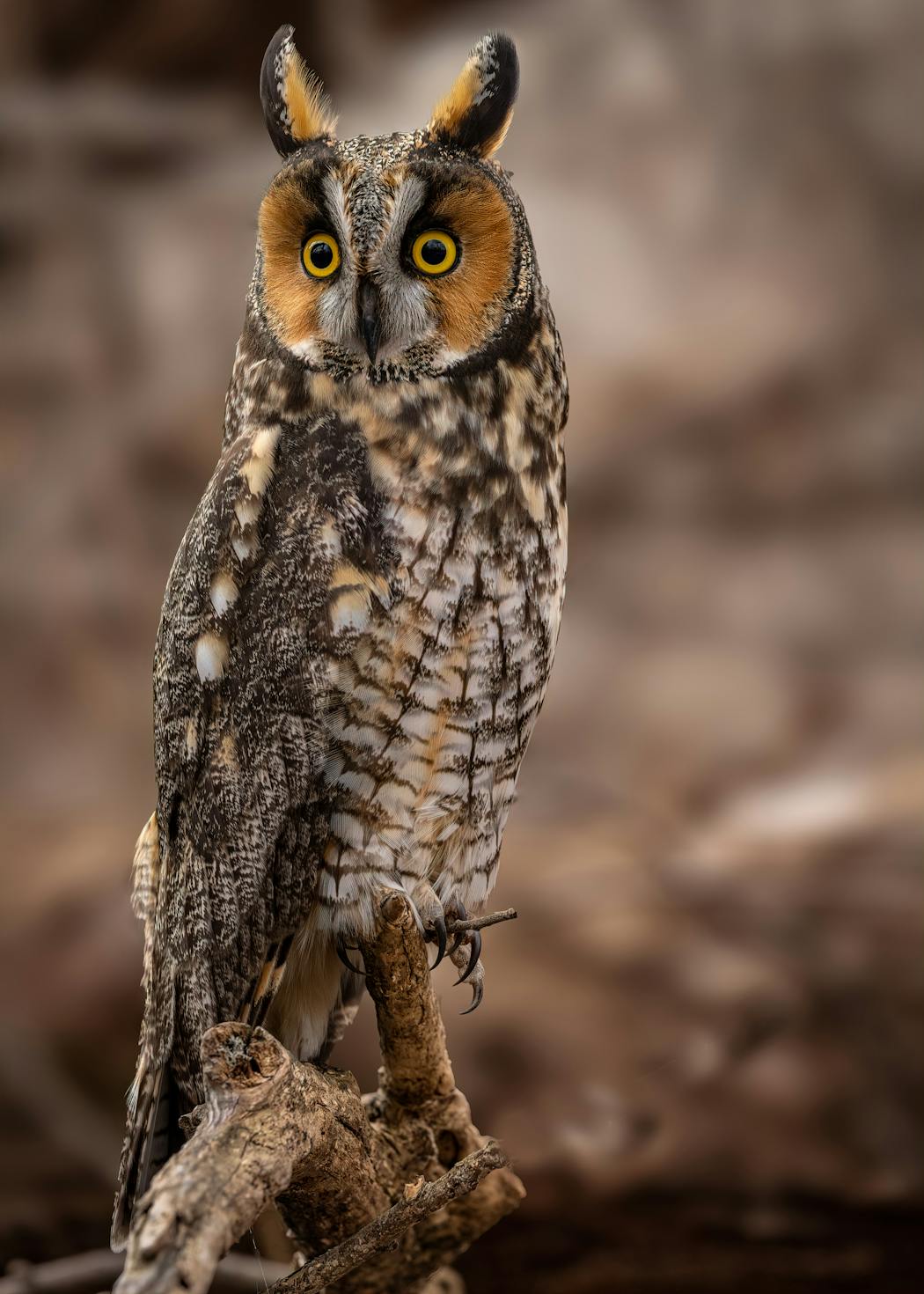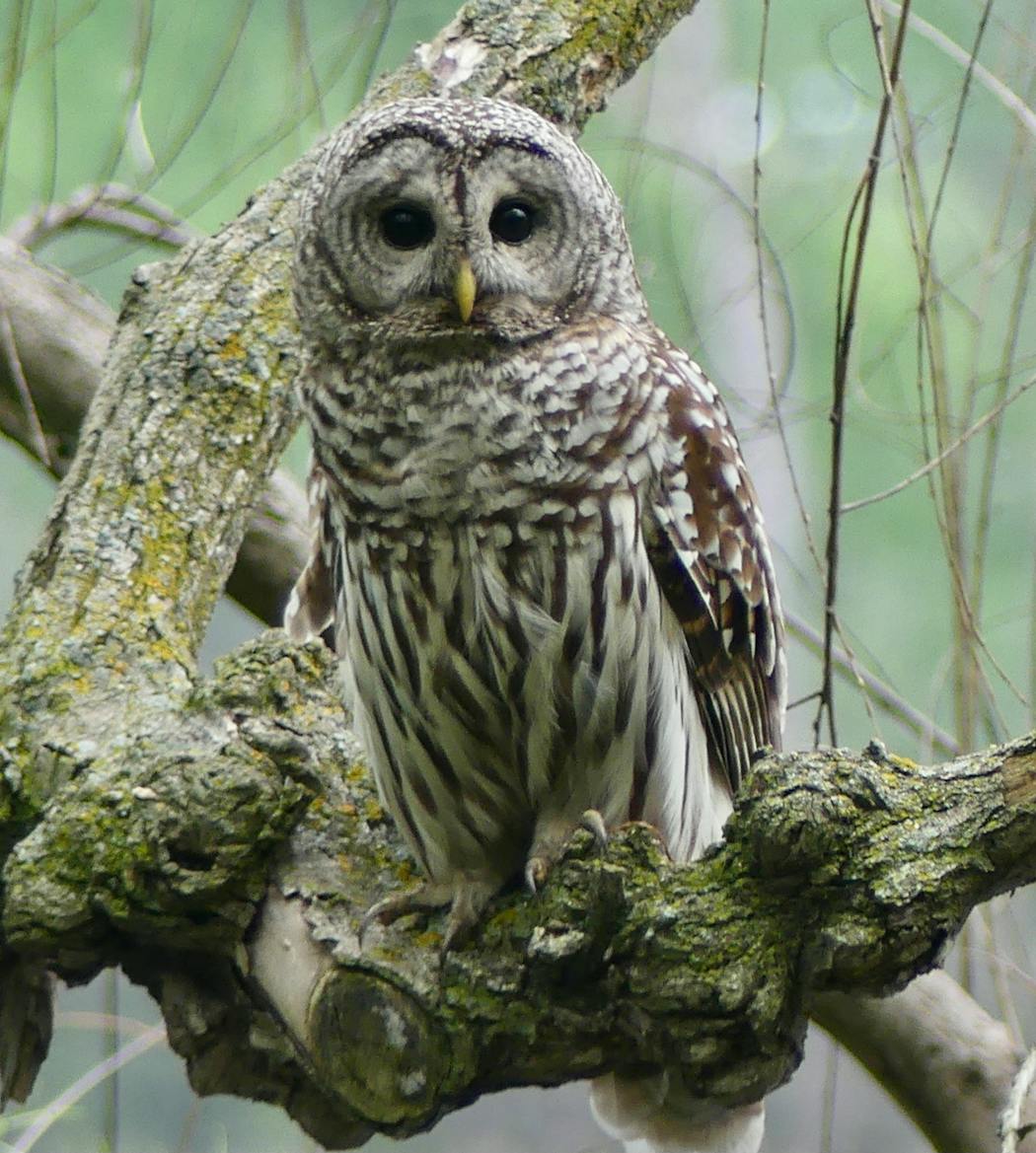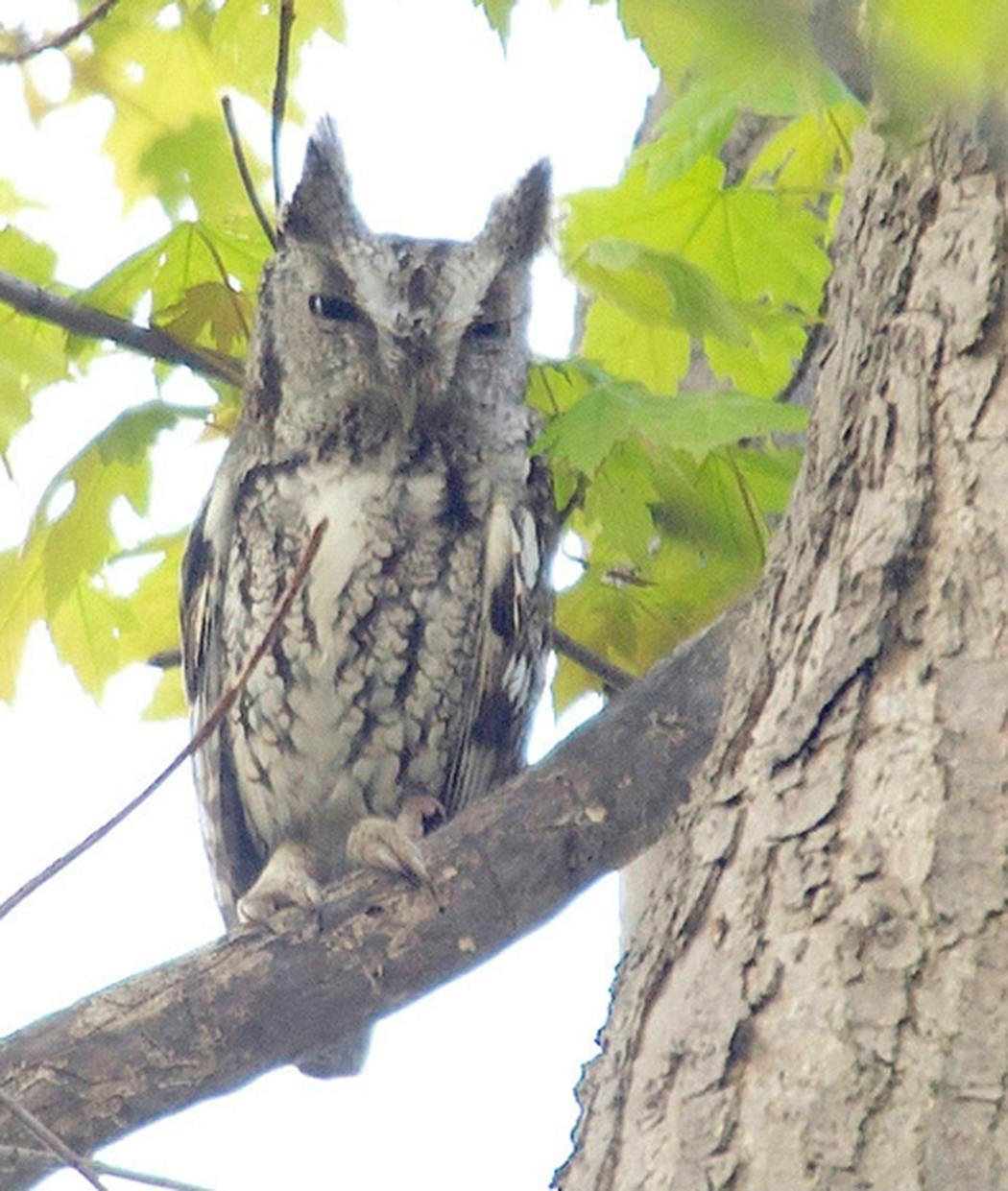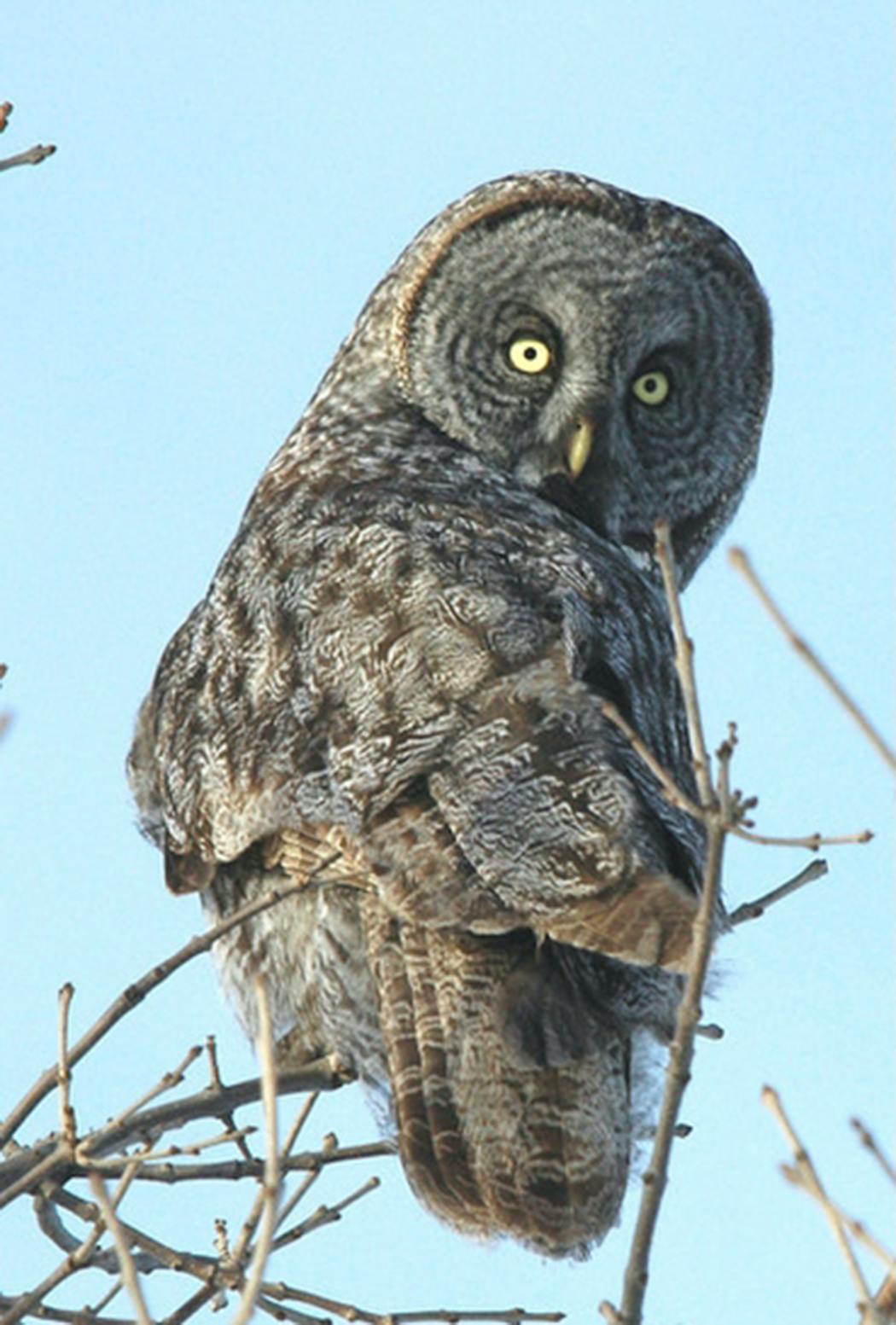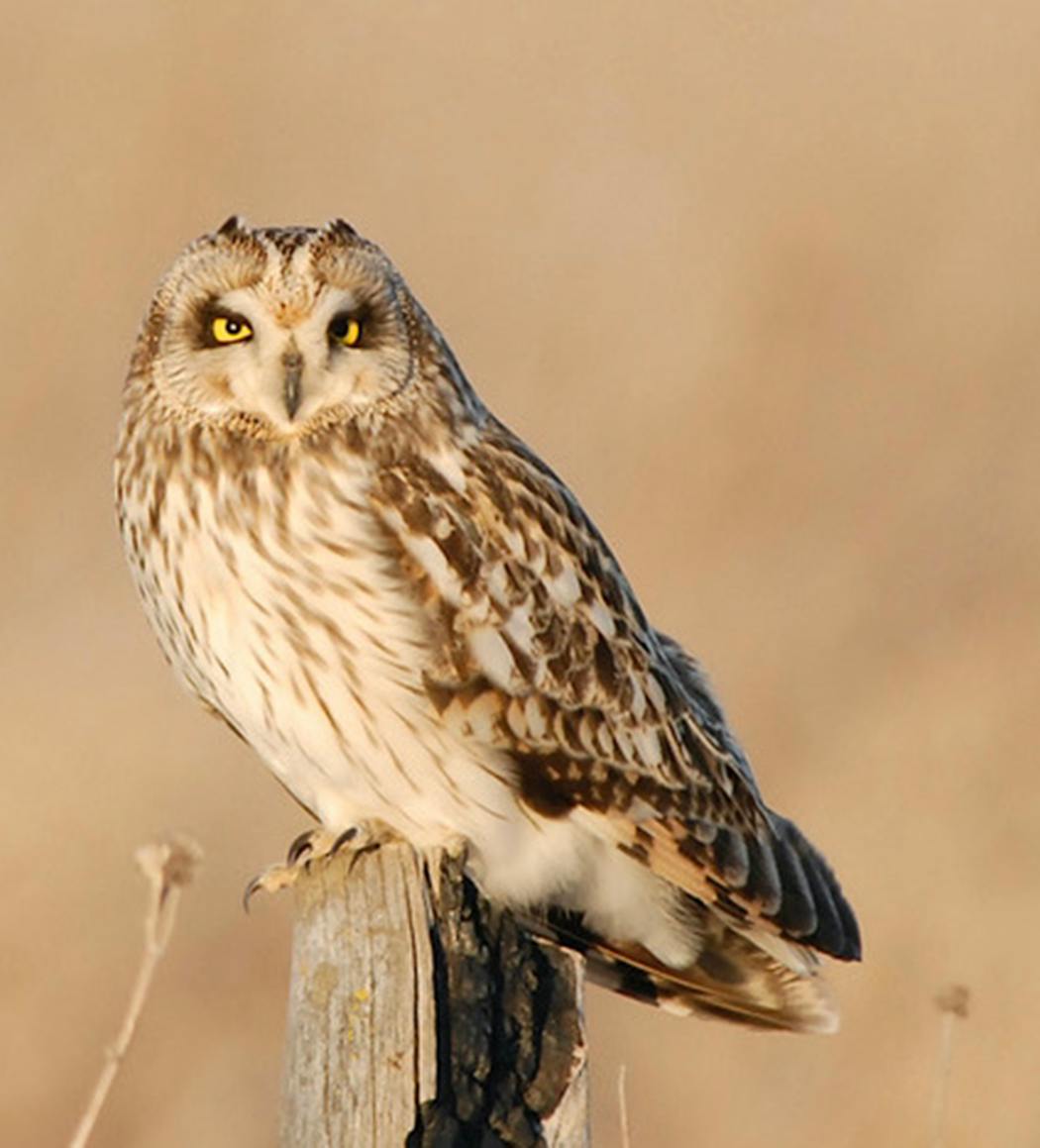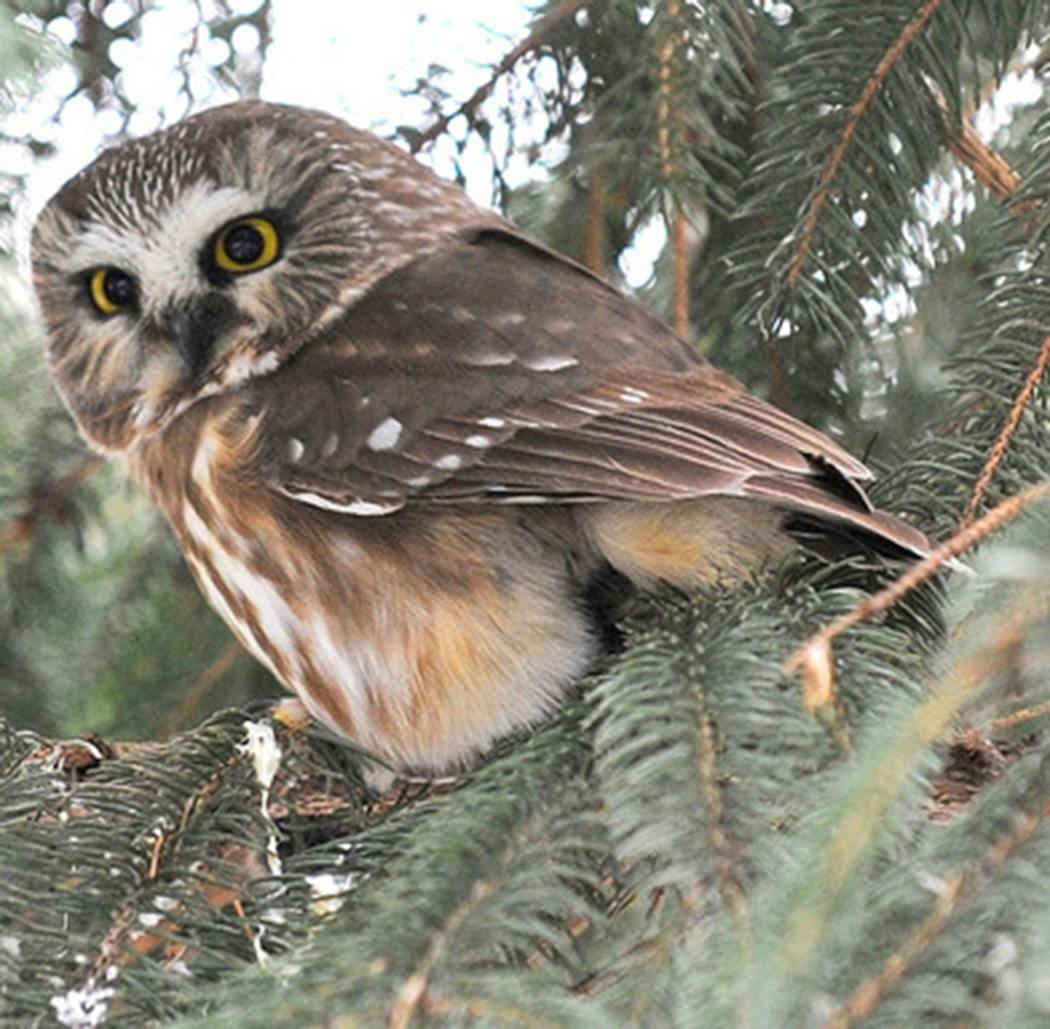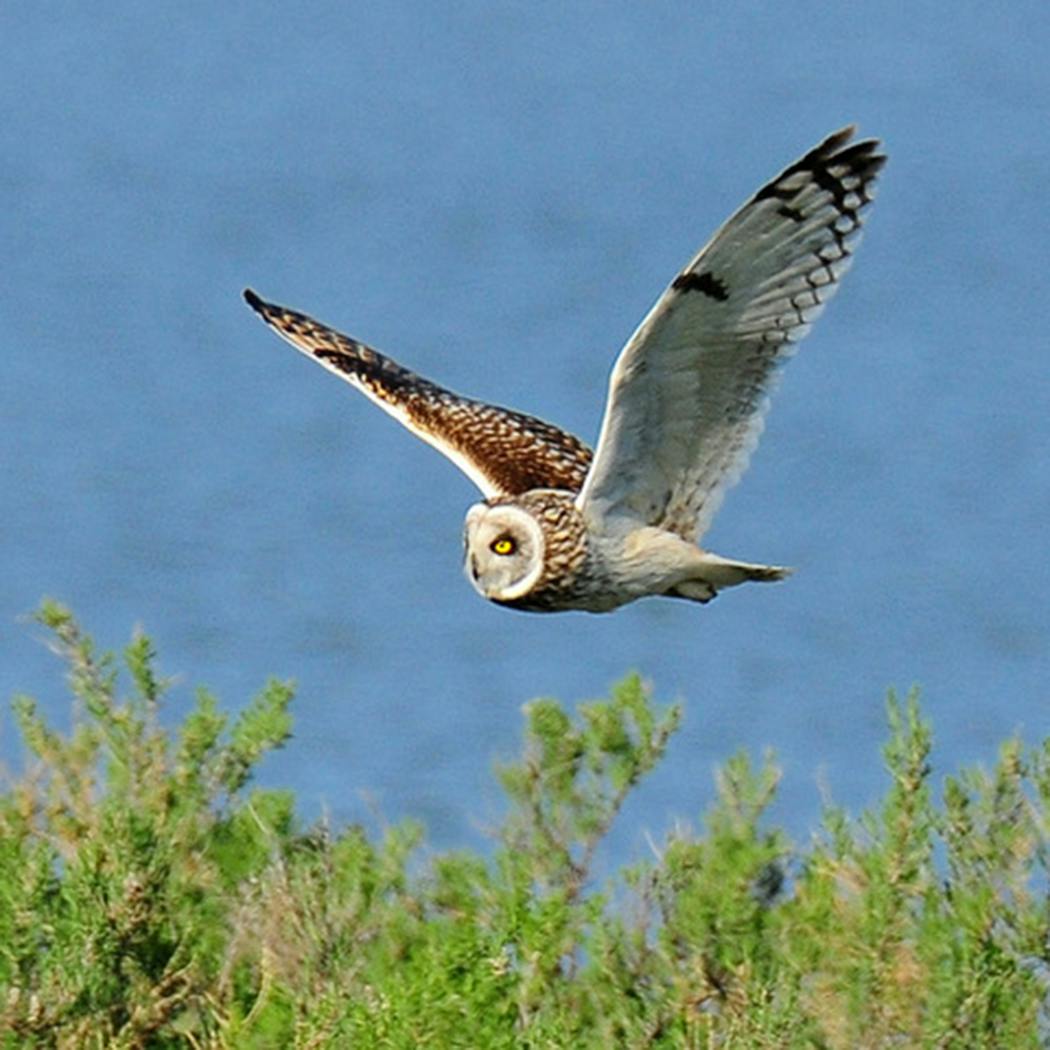Big owls, little owls, white owls, dark owls, owls with "ears," awww-cute owls — there's plenty to see in the trees.
If you're an owl fan (and who isn't?), then you'll be happy to know that it's possible to see eight species of owls in our area, at least for part of the year. Some are fairly easy to spot, while some are a real challenge.
The three most common are the great horned owl, barred owl and screech owl, a "Goldilocks" trio: Great horned owls are very big, barred owls are medium-sized and screeches are very small.
Owls work hard to avoid coming to our attention — you may have walked under an owl perching in the woods without even realizing it. When we do notice owls, it's usually during nesting season, when owls are calling and attached to a nest site. Or when crows or other birds call loudly and dive-bomb an owl to drive it away.
Some owls are already raising their broods, and one fascinating feature of the owl world is that with few exceptions, owls don't build their own nests. They generally let other creatures do the construction work or find good-sized holes in trees.
Humans are mad for owls, it seems, and people gather wherever and whenever they hear of owl sightings. This is disturbing to the owls, especially during the breeding season, which is why there's a hard-and-fast rule in the birding community: Do not report owl sightings.
It's a wonderful thing that some owls nest near us, and we need to return the favor by giving them room to go about their business without harassment. This doesn't mean you need to avoid an area where owls are nesting, just be discreet.
Here's an introduction to owl species you might see in Minnesota. In some cases, you'll have to drive a ways, some might show up only during spring or fall migration and snowy owls only occasionally move down from the Arctic.
If you're looking for owls, keep your eyes peeled, visit owls' preferred habitats and be patient. If you discover an owl, please keep it to yourself, enjoy the sighting and then move on.
-
Great horned owl
Large, up to 2 feet tall, weighs 3 to 5 pounds. - Wide range of habitat — forests, woodlots, open country, even city lots. Hunts prey from perches.
- Adopts an old nest built by a hawk or squirrel, or uses a tree cavity or snag.
- Early nesters: Eggs laid in late January or February, young hatch in late February or March; nests produce two to three owlets, on average.
- Male's resonant calls carry for miles, both genders emit deep "hoo, hoo, HOO" sounds; also make confusing squawks, and youngsters may make piercing screams.
- Preys on just about anything that moves — rabbits, skunks, voles, squirrels, cats, ducks, geese, smaller owls.
- Feather tufts on top of head resemble ears; so fierce they're called "flying tigers," night hunters. The great horned is what usually comes to mind when people think of owls. Usually mates for life.
- Non-migratory.
Long-eared owl
- Crow-sized, 12 to 15 inches tall, 1/2 to 1 pound.
- Lives in forests with open country nearby for hunting, hunts on the wing by coursing over open areas.
- Adopts an old crow or hawk nest.
- Nesting season begins in March or April, young hatch about four weeks later; usually raise four to five owlets.
- A fairly quiet owl, makes soft hoots, shrieks and whistles.
- Diet is almost entirely rodents.
- The least-seen owl, these secretive raptors may form communal roosts of up to 24 owls in winter; hunts at night. Can stretch into a very, thin, tall bird, resembling a branch, if threatened; has ear-like feather tufts on head.
- Some migrate, some remain all year.
Barred owl
- Stocky-looking owl, 17 to 20 inches tall, weighs about 1 ½ pounds.
- Lives in forests with large trees, often near water, sits on a branch to watch for prey.
- Usually nests inside natural cavities in large trees.
- Nesting season begins in March, eggs hatch a month later; raises one to five owlets.
- Call sounds like "Who cooks for you?" Can also sound "like a woman being murdered," says International Owl Center's Karla Bloem, or maniacal monkeys.
- Varied diet — rodents, rabbits, birds, large insects, frogs, fish.
- Has distinctive brown eyes, unusual in the yellow-eyed owl world; night hunter, but during nesting season may hunt during the day, calls during the day more than most other owls. Very round head, no ear tufts; mates for life.
- Non-migratory.
Eastern screech-owl
- Small, robin-sized, 7 to 10 inches tall, weighs 7 to 8 ounces,
- Lives in forests, parks, suburbs, even urban backyards with large trees.
- Nests in natural tree cavities, woodpecker holes, even wood duck nest boxes.
- Eggs laid mid- to late March, typically raises three to four owlets.
- They don't screech, but make a trill or whinny "like a tiny horse up a tree," says International Owl Center's Karla Bloem; their calls are often featured in scary movies.
- Eats small rodents, songbirds, reptiles, insects, earthworms; they hunt from perches after dark.
- Plumage looks like tree bark, and may be either gray or red — the grays survive better in the cold; in southeastern Minnesota grays used to be more common, now red screeches are. Unusual in the owl world, males sometimes help incubate eggs; has ear tufts.
- Non-migratory.
Great gray owl
- Tall, 27-28 inches, but lightweight, 2 ½ pounds.
- Lives in coniferous forests near meadows or bogs in northeastern Minnesota.
- Uses old raven or raptor nests, or broken treetops.
- Eggs laid in April or May, typically raises three owlets.
- Call is a series of resonant hoots.
- Hunts voles, mice, lemmings by day or night, watches for prey from a perch.
- An uncommon owl, known for its plunge dives into deep snow to catch its prey, pairs break up after breeding season. Huge facial disk makes eyes look small.
- Non-migratory but may travel to find food.
Short-eared owl
- Medium-sized, 13-17 inches tall, weighs ½ lb. to just over 1 pound.
- An open-country owl, lives in areas such as marshes, grasslands, farm fields.
- Builds nest on the ground.
- Typically lays five to seven eggs in May or June.
- Hunts voles and other small mammals, flying low over the ground, often hovering.
- Call is a series of hoots, also may bark, scream or whine.
- Small ear tufts usually not visible, dark feathering around eyes looks like smudged eye makeup, distinctive moth-like flight, female scrapes a nest bowl and lines it with grasses and feathers.
- One of few owl species to build its own nest.
- Migratory, sometimes nomadic.
Northern saw-whet owl
- Tiny owl, about 8 inches long, weighs 2 ½ to 5 ounces.
- Lives in dense forests, wooded swamps and bogs, seen in our area during migration, sometimes in winter.
- Nests in tree cavities and woodpecker holes.
- Usually lays five to six eggs in April or May.
- Song is a series of whistled notes ("Sounds like a truck backing up," says Karla Bloem of the International Owl Center), also whines, barks and squeaks.
- Hunts mostly at dusk and dawn from low perches.
- Known to shuffle feet when perching, highly nocturnal, seldom seen, but said to be common and widespread; the "awww" owl — they're just plain cute.
- Migratory.
Snowy owl
- Big owl, 20 to 28 inches tall, weighs 3 ½ to 6 ½ pounds.
- Lives and breeds on tundra in the Arctic.
- Nests on the ground in a bowl dug out by female, three to five eggs if food is scarce, up to 14 if food is plentiful.
- Eggs laid mid-May to early June.
- Deep, raspy hoots in breeding season.
- Hunts lemmings and voles in breeding season; in winter adds rats, rabbits, grouse, waterfowl; hunts in the dark.
- Some move down from the Arctic in winter, sometimes seen in Minnesota in tundra-like settings like airports; may roost on the ground in daytime out in the open; most snowy owls are not pure white — females and young birds have dark barring.
- Non-migratory, but nomadic.
Owls, owls and more owls
Get your owl fix at the International Festival of Owls, a celebration of all things owly in Houston, Minn., April 30 to May 1. The festival is a great family event, featuring many fun activities for kids, including an owl hooting contest.
The annual event has been revamped to allow for COVID precautions, with most events scheduled outdoors this year. View the winners of the Kids' Art Contest, with entries from around the world, choose from owl-themed foods, dissect an owl pellet, attend live owl programs and more.
Check out the website, www.festivalofowls.com, for a current list of events.
Listen to owls
Recordings of each owl species' sounds are available on a Cornell Lab of Ornithology website. Search for "All About Birds," then when the page opens, type in the name of the owl you want to listen to, and select the "Sounds" icon.
Two other owls
Two other owl species may be seen in Minnesota, the Northern hawk-owl and the boreal owl, both of which spend their lives far to the north of here.

The 5 best things our food writers ate this week

A Minnesota field guide to snow shovels: Which one's best?

Summer Camp Guide: Find your best ones here

Lowertown St. Paul losing another restaurant as Dark Horse announces closing



